In my last T+A review we discussed how the source component performs the critical job of injecting the audio you want to listen to into your system while keeping it pristine. I would argue that this next component has an even bigger impact on the sound quality of what you listen to. The T+A DAC 200 is a combination digital to analog converter and stereo preamplifier in one chassis. There are a sizable number of DACs with a variable level analog output. T+A goes farther than that with the T+A DAC 200.
The T+A DAC 200 is from the 200 Series, which is in the middle of the T+A lineup and significantly less expensive than their HV flagship line, but it borrows heavily from the HV flagship designs. Ronald Reagan’s trickle-down economics have been proven to be a failure overall in terms of policy, but I am a fan of trickle-down technology when it comes to audiophile products. The T+A DAC 200 is one of two different DAC/preamplifiers in the 200 Series lineup, with the other one optimized for headphones. Through the use of a clever control system and a control cable that connects the components, the units can almost function as one component, controlled by T+A’s own app, which works on both iOS and Android devices. While the included remote was comfortable and easy to use, I found myself utilizing the app much of the time.
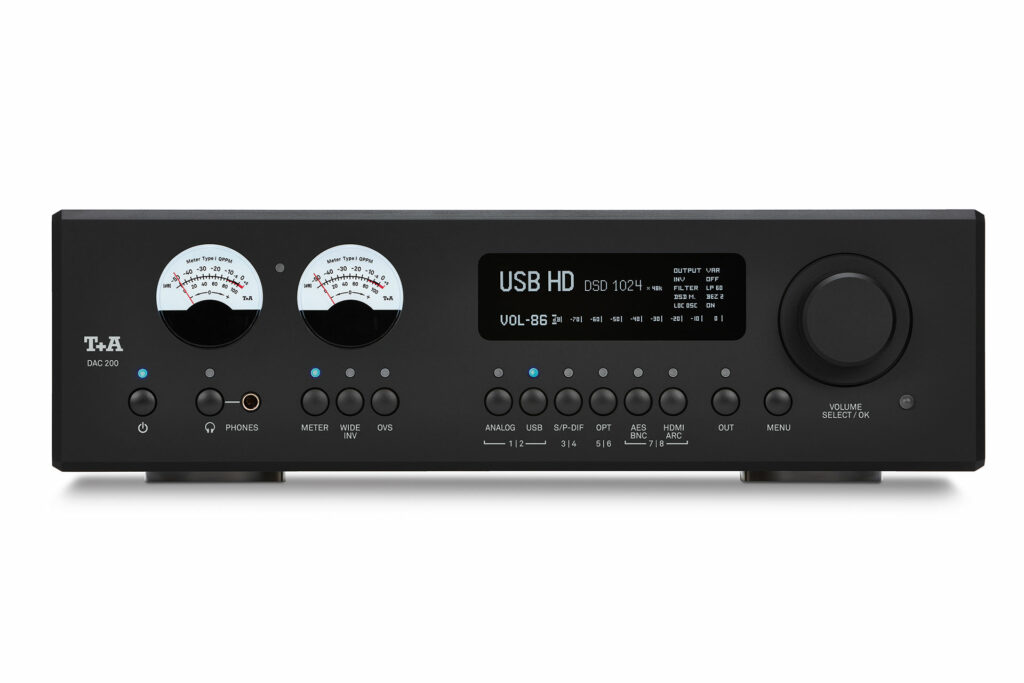
The 200 Series is visually distinct, with its compact chassis and silver or black metal casework that makes it readily identifiable as a T+A product. The T+A DAC 200 Series chassis measures 12.6 inches wide by 13.4 inches deep and four inches high. The DAC 200 weighs 13.7 pounds and feels very solid, as do the other components in the lineup. The industrial design of the 200 Series carries over design elements from other T+A lines, including matte finishes, beveled edges, and control knobs with a distinctive flange design.
What Makes the T+A DAC 200 Special?
- The T+A DAC 200 has a wide variety of digital inputs that can manage a multitude of audio file types up to 24-bit / 192 kHz on most inputs, with the USB inputs able to accept up to 768 kHz and DSD files up to DSD1024. There is one unbalanced analog input as well.
- The T+A DAC 200 has dual DACS. The T+A DAC 200 comes with two DACs in one chassis. One DAC is optimized for PCM and the other for DSD files. The T+A Path Separation Technology keeps the PCM and DSD signal processing paths completely separate from each other, with each being optimized for the file type. The DSD files utilize a True 1-bit converter whereas the PCM files use a Quadruple converter with eight 32-bit Burr-Brown converters. Six different FIR, Bezier and NOS filters can be implemented at the listener’s preference.
- Most DACs earn their worth when it comes to de-jitter capabilities. T+A uses their De-Jitter Masterclock to eliminate timing errors, with multiple oscillators utilized in a two-stage system, which T+A claims provides Femto clock accuracy.
- Galvanic isolation allows the T+A DAC 200 to keep church separate from state in terms of audiophile design. T+A’s Digital Analogue Separation System (“DASS”) provides complete galvanic separation between the analog and digital systems.
- A true headphone amplifier is included in the T+A DAC 200. This amp is Class-A up to 200 mA at 16 ohms with a 4.4-mm Pentaconn output. Wired headphone people will love that design perk.
- The fit and finish of the DAC 200 is understated and well-executed. The 200 Series products from T+A are about 2/3 of normal component width, which makes me suspect they will not be hidden away in a rack, but rather someplace more visible, which is particularly great when it comes to the DAC 200. The DAC 200 reminds me of some of the Nagra and D’Agostino gear, with dual meters that can be configured to display different information. The meters and large easy-to-read display screen are over a neat row of colored chassis buttons. The large knob on the right has an attractive flange and can be depressed or rotated to make selections.
- The remote and T+A app provide an inviting, easy-to-utilize interface. If the gear is hard to use, it is hard to enjoy, no matter how good the audio quality is. T+A provides a slim, aluminum-bodied remote that feels nice and oversees basic controls.
Why Should You Care About the T+A DAC 200?
While I see the MP200 mainly appealing to those considering the full stack of T+A 200 Series components, I think the DAC 200 may have broader appeal as a standalone audiophile component, as it provides excellent DAC performance while also providing basic preamplifier functionality. Having a complete Series 200 stack provides for integrated control between the components and makes for seamless integration. This makes using the system even simpler and faster, and I have become an enthusiastic fan of being able to quickly access my music as easily as possible.
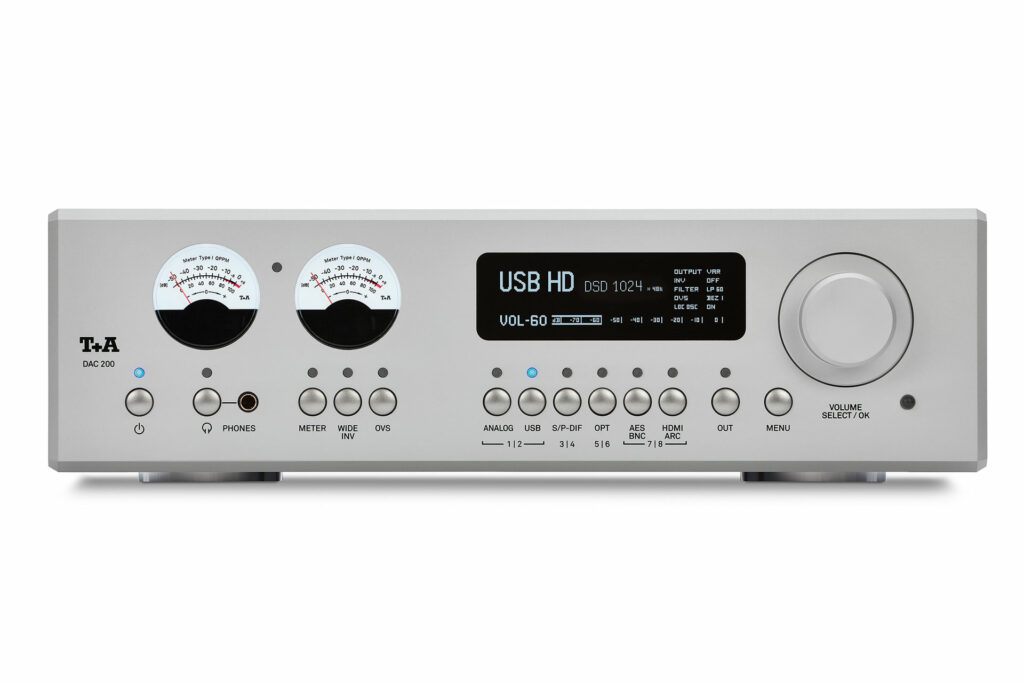
Some Things You Might Not Like About the T+A DAC 200
- I would have liked to see a network audio input. I know T+A is looking to sell this as part of a stack with the MP200 music player (that I loved), but it would be nice to have this, at least as an option in this streaming-oriented part of our hobby.
- The T+A DAC 200 has limited analog connectivity. I know this is primarily a DAC, but if there is going to be a capable preamplifier section with analog input capacity, a balanced input would be nice.
- There is no MQA compatibility in the T+A DAC 200. With much of the music being listened to today coming from streaming sources and the widespread use of MQA therein, it would have been nice to see this capability.
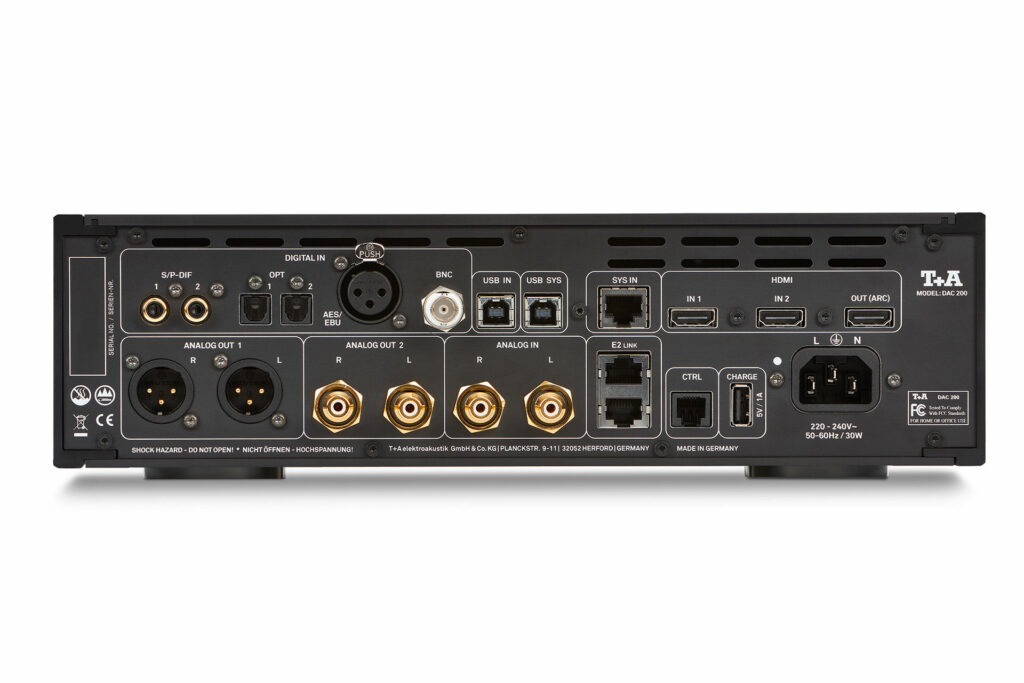
Listening to the T+A DAC 200 DAC/Preamplifier…
I set up the T+A MP200 Multi Source Player with the DAC200 DAC/Preamplifier and A200 stereo amplifier making for a complete Series 200 stack, playing through Revel F328Be speakers. I made the DAC connections via a Kimber DV-75 coaxial cable and USB cable, as well as making the system control connections. I used both Mac and Windows OS-based laptops to feed the USB input on the DAC 200.
Listening to Joss Stone’s “The Chokin’ Kind,” I got drawn into Stone’s voice as the detail the DAC 200 extracted rendered an eerily realistic reproduction of her voice with a touch of sibilance. Stone’s voice is powerful and well-formed, distinct in position from the backup vocalists and instruments. The drums were taut, punchy, and well-controlled.
The next track was a more modern female performer that I also used in the MP 200 review, Taylor Swift’s “Vigilante Shit” (Tidal, 48 kHz / 24-bit). This is a bass-heavy track, with heavily processed vocals. The synthesized bass, like the drums from the prior track, were powerful while remaining tight and balanced, or at least as balanced as the underlying recording.
Wanting to go back to a more natural-sounding recording, I listened to Nat King Cole’s album Love Is the Thing. I have this album in my library in both DSD64 and FLAC 44.1 kHz / 16-bit, so I listened to both to see if there would be much difference. The DSD version sounded significantly better to me. Cole’s voice was remarkably similar in both, but the backing orchestra and soundstage were different. The DSD had a wider soundstage, with the instrument placement more clearly delineated. The strings were better defined, making them more engaging, especially the violins.
Will the T+A DAC 200 DAC/Preamplifier Hold Its Value?
Digital music sources are here to stay and, unless there are new formats that 1) are drastically better than what we have, 2) cannot be implemented by a firmware update, and 3) become predominant in the streaming world, there is no reason why the T+A DAC 200 cannot continue to provide you with great performance for many years to come. The build quality of the DAC 200, and all the T+A units I have seen, is extremely good, and I expect them to continue to perform at an elevated level for many years. That said, digital components tend to become outdated and therefore lose value faster than other components, such as amplifiers. However, in comparing the longevity of the DAC 200 to other DACs, this one is here to stay.
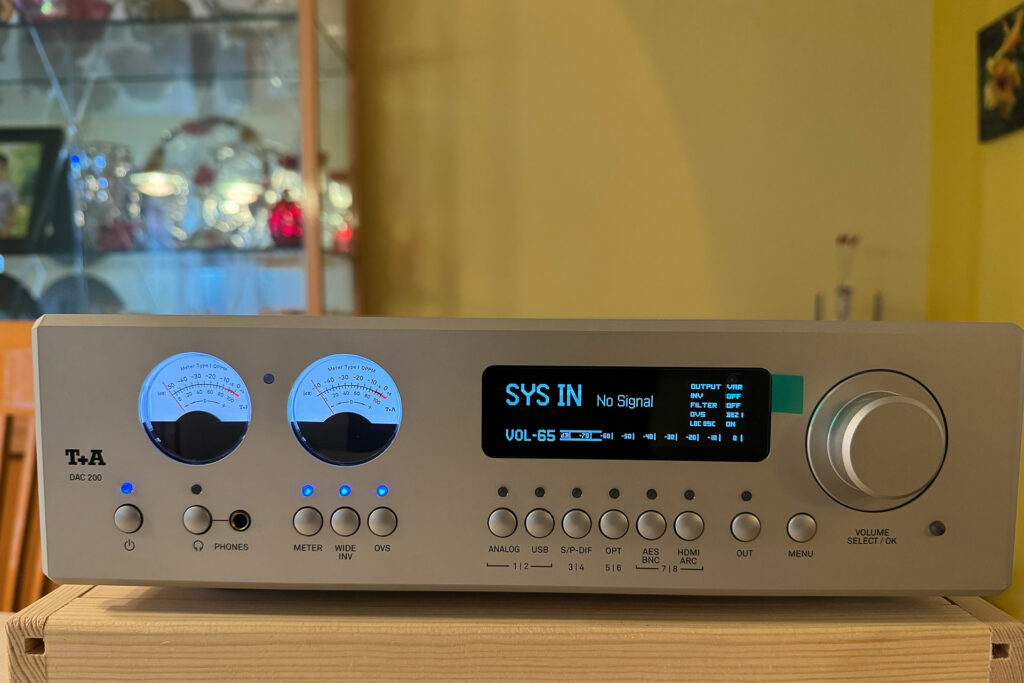
What Is the Competition for the T+A DAC 200?
Some of my colleagues swear by Bricasti DACs, but I must admit I have not had much experience with them yet. The Bricasti M3 (read the review) looks like it would be comparable, being priced at $5,500; for $6,500, you can add network audio capability. Bump it up to $7,000, and you add a built-in headphone amplifier. This model caught my attention because, like the DAC 200, it also has separate PCM and DSD conversion paths.
PS Audio’s DirectStream DAC MK2 (read the review) is slightly more expensive at $7,999 and, like T+A, touts its sophisticated galvanic isolation. The DirectStream does not have separate conversion paths for PCM and DSD, and converts everything to DSD before converting to analog. If you want to add network audio capability, you will need to add an outboard device, such as PS Audio’s AirLens (review pending), which adds another $2,000. PS Audio’s DirectStream series of DACs is easily upgradable through their FPGA architecture, and PS Audio has a solid record of providing updates.
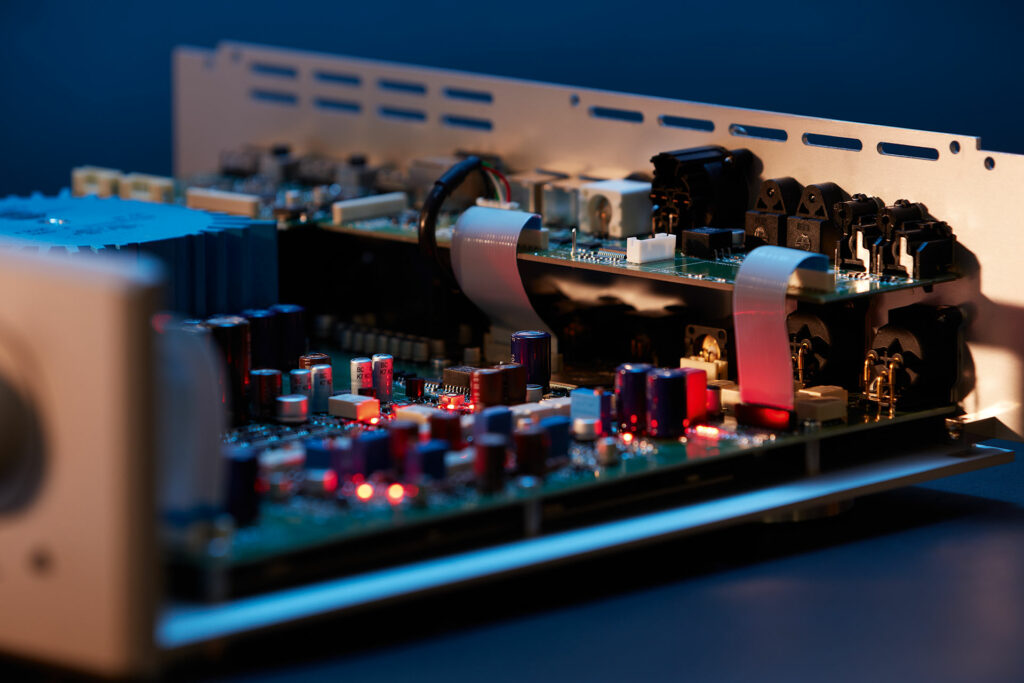
Final Thoughts on the T+A DAC 200…
The T+A DAC 200 is the heart of a Series 200 system. If you have other Series 200 components, the DAC 200 is an easy decision for any audiophile with the means. As with the previously reviewed T+A MP 200, the quality, functionality, and integration make this selection a no-brainer. During my time with the DAC 200, I used the MP 200 as the source for the majority of my listening, but I did use the coaxial digital output of an Oppo universal disc player, and I am happy to say that DAC 200 is source-agnostic, which I attribute in large part to its master clock system. While the DAC 200 did a great job with the digital signal from this older disc spinner, the integration of the Series 200 stack’s control system makes using a complete Series 200 stack all that more enjoyable.
T+A DAC 200 FAQ
How to hook up an audiophile DAC?
This is question is best for a dealer or installer but setting up a DAC should be pretty easy for the somewhat experienced audiophiles.
DACs accept digital audio inputs. There are all sorts of inputs that one might use. USB (better for smartphones than audiophile applications because of the noise that comes from sharing data and power on the same cable). AES/EBU is considered the best way to connect digital components. This is a cable with an XLR connector at the end dedicated to digital audio. I2S is perhaps the next best way which is more of a digital-only way to connect audio using an HDMI connector/cable. S/PDIF and COAX are more simple connections but also very capable of a high end audio connection. Optical is another, more rarely used option. There are other, often proprietary options to connect your DAC in terms of inputs.
Outputs on a DAC tend to be analog thus you will be connecting them to your stereo preamp or integrated amp or even AV receiver using either XLR (balanced) or RCA (unbalanced) connections.
Overall, this is a pretty simple process but can vary from DAC to DAC
When would you use a DAC?
Audiophiles looking to get incrementally better sound from their CD players, music streamers and or really any source component might seek an outboard DAC.
Why does an audiophile DAC improve sound?
- Better power supply
- Better jitter reductions
- Better digital clocking
- Better internal DAC chip used




Thanks for injecting your liberal fucking politics into a component review.
Our excellent free content allows you money to buy some more My Pillow Guy products… You should thank me.
You’re content has adds although benign makes it clearly not free.
Injection of politics in a HI FI review is just plain unwarranted. Not only does it have nothing to do with contents of the review, it alienates at least half of your readers. Given the fact that the country is divided almost evenly in terms of party or ideology.
Just unnecessary and unhelpful.
My pillow is an excellent pillow by the way. I love mine
You should find the video of the audiophile cable company owner making fun of my friend, Gene Dela Salla from Audioholics.com from the front seat of the EQ cable guys’ Ferrari making MAGA fun of him because he caught early COVID in march of 2020.
Exposing audiophiles to this level of hate is both NECESSARY and HELPFUL.
Let me help you… you don’t need $30,000 EQ speaker cables unless you are an idiot. Then again, you don’t need to donate money to a so-called billionaire former president because he says “I am rich. I don’t need your money” back in 2016. Remember that? That was before the NFTs and the MAGA bible.
Relevance?
Don’t be hateful and there won’t be nearly as much. Funny how that works.
With Tidal scheduled to drop all MQA tracks by 7/24 and to my knowledge no other streaming service currently offers MQA I feel the absence of the decoding in the T+A was over emphasized. HD Tracks along with Lenbrook is supposed to offer a streaming service at some point but I wouldn’t cry over the lack of MQA decoding based on that.
Uh, keep politics out of your reviews. Ronald Reagan’s and David Stockman’s “trickle down economics” resulted in the longest peacetime economic expansion in our nation’s history up to that point, only stopped when George Bush Sr. got in and made a deal with the devil (Democrats) to raise taxes – something they used against him extensively in the next election cycle.